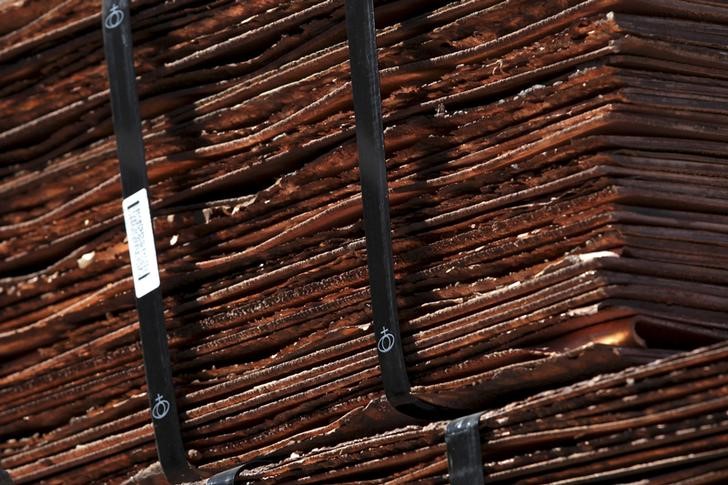Hansen, Mueller Industries director, sells $105,710 in stock
Investing.com -- The Trump administration implemented a 50% tariff on US imports of semi-finished copper products and copper-intensive derivatives on August 1, while surprisingly exempting refined copper and concentrates from the Section 232 tariff.
Following the announcement, US COMEX copper prices dropped over 20%, while London Metal Exchange (LME) copper prices fell by only about 1%.
This narrowed the price gap between the two markets from a 30% premium to just 1%.
The proclamation also mandates that a portion of US-produced copper input materials be sold domestically, starting at 25% in 2027, increasing to 30% in 2028, and reaching 40% by 2029.
Similarly, 25% of high-quality copper scrap produced in the US must be sold domestically.
These measures aim to strengthen US refining capacity by ensuring reliable supply as domestic refiners expand operations.
However, UBS analysts believe these export requirements will have minimal near-term impact, as approximately 40% of US copper scrap is already processed within the country.
Market tightness previously resulted from increased US imports ahead of the tariffs, which reduced LME copper inventories.
Now, after substantial US buying in the first half of the year, US copper prices may trade below LME prices amid ample domestic inventories.
On the production side, guidance from major mining companies for 2025 shows mixed results.
Nornickel lowered its forecast to 343,000-355,000 tons from 353,000-373,000 tons, and Teck revised its range to 470,000-525,000 tons from 490,000-565,000 tons, while Glencore (OTC:GLNCY) maintained its guidance at 850,000-890,000 tons.
Manufacturing PMIs in China, Europe, and the US remain below 50, indicating contracting activity. In July, the US PMI fell to 46.8, the Eurozone’s edged up to 49.8, and China’s was 49.3.
Despite these challenges, UBS maintains a positive outlook on copper, forecasting prices above $10,500 per metric ton by mid-2026.
The bank projects a market deficit of 53,000 metric tons in 2025 and 87,000 metric tons in 2026, with refined copper demand expected to grow by 2.2% in 2025 and 2.9% in 2026.
This article was generated with the support of AI and reviewed by an editor. For more information see our T&C.
